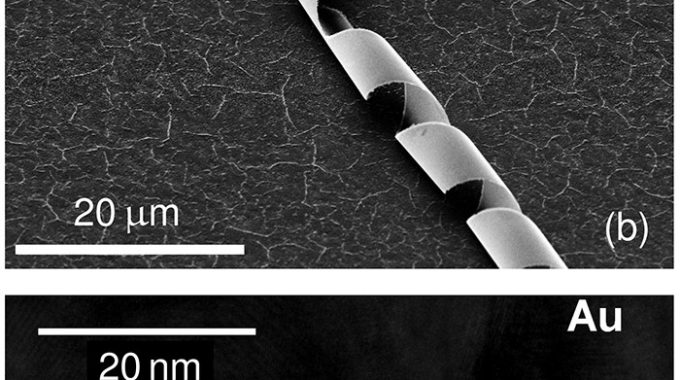
Microwave Radiation Detection with an Ultrathin Free-Standing Superconducting Niobium Nanohelix
Authors: Sören Lösch, Alexey Alfonsov, Oleksandr V. Dobrovolskiy, Robert Keil, Vivienne Engemaier, Stefan Baunack, Guodong Li, Oliver G. Schmidt and Danilo Bürger
ACS Nano 13, 2948-2955 (2019)
Abstract: We present a superconducting bolometer fabricated by a rolled-up technology that allows one to combine the two-dimensionality (2D) of the superconducting layer with a helical spiral curvature. The bolometer is formed as a free-standing Nb nanohelix acting as an ultrathin transition-edge sensor (TES) and having a negligible thermal contact to the substrate. We demonstrate the functionality of the thin-film TES by examining its microwave-detection performance in comparison with a commercial cryogenic bolometer from QMC Instruments. The nanohelix has been revealed to feature a noise equivalent power (NEP) of about 2 × 10–10 W Hz–1/2 at a microwave radiation power of 9 W m–2, which is 4 orders of magnitude smaller than the NEP of the QMC sensor at a similar radiation power. Furthermore, the forecast for the nanohelix is a 1 to 2 orders of magnitude shorter response time as compared to sensors based on commonly used 1 μm thick Si3N4 membranes. The reason is the extremely low heat capacity of the 50 nm thick supporting material and the few contact points between the TES and the substrate. Our findings indicate that microwave radiation detection can be substantially improved by extending 2D superconducting structures into the 3D space.
